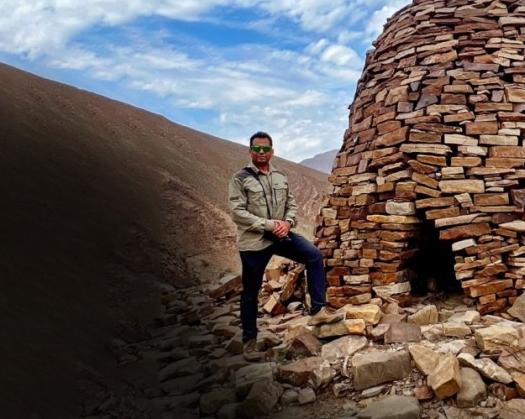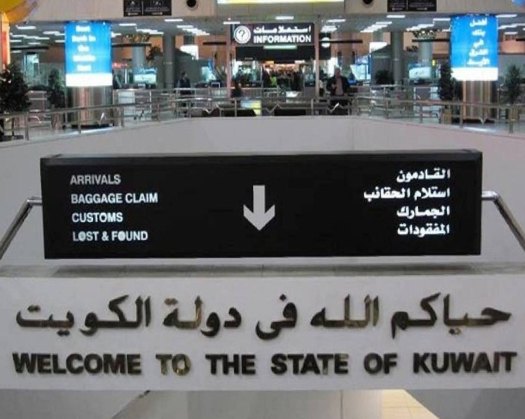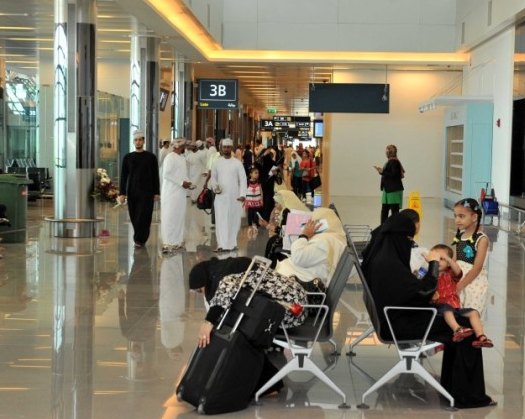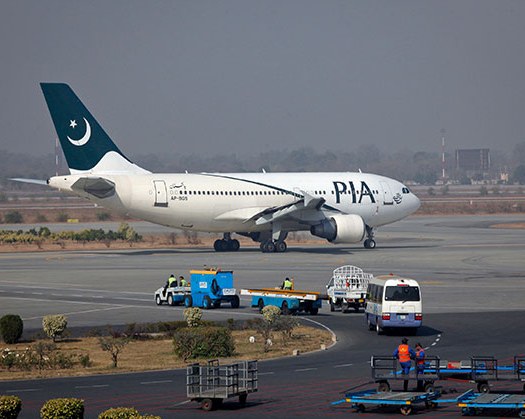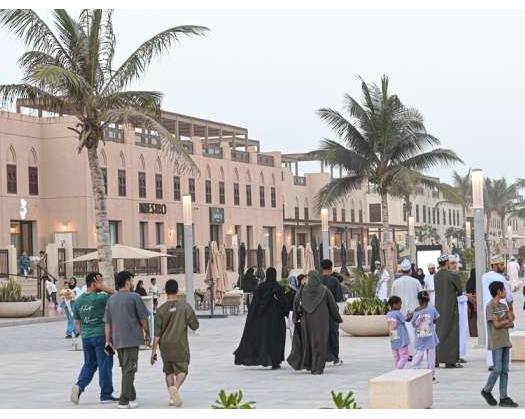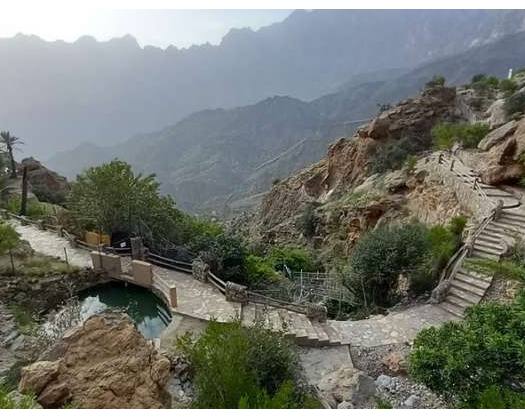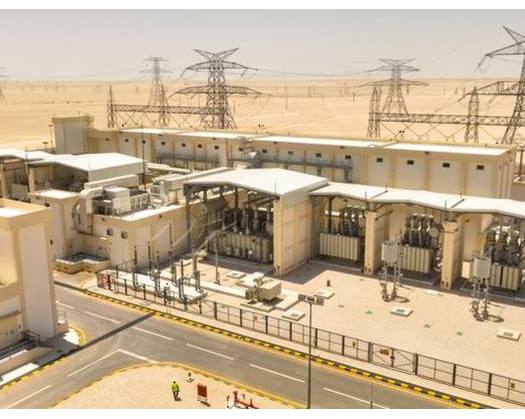Following a rather uneventful initial three hours, the journey from Duqm to Salalah eventually leads to the serene turquoise waters of the Arabian Sea. From there, the road gracefully follows the coastline, offering breathtaking views of the majestic cliffs of Ash-Shuwamiyah and Mirbat. Amidst this awe-inspiring scenery, the remnants of a forgotten city gradually come into sight. This ancient city, situated atop a hill, is beautifully complemented by the enchanting Darbat waterfall, which graces its backdrop during certain times of the year. Moreover, the city overlooks the tranquil blue lagoon of Khor Rori, adding to its picturesque charm.
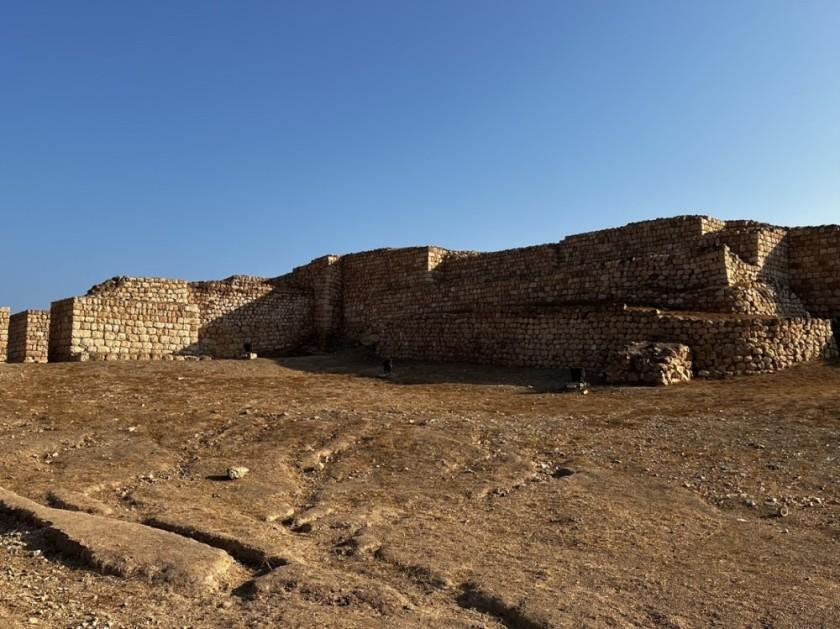
The Frankincense Port
The Frankincense Port, known as the city of Sumharam, has a rich history dating back to the 3rd century BCE. During this time, Oman played a crucial role as an international trading hub for frankincense. Referred to as Moscha Limen in the ancient Greek Periplus of the Erythraean Sea, the city served as a major outpost for merchant ships traveling between the Mediterranean, Egypt, and the Indus Valley civilization in India.
Today, the remnants of the city's fortified walls, monumental gate, multi-story residences, warehouses, temples, and other structures stand as a testament to its former wealth and grandeur. Imagining the scene within these impressive ruins, one can envision the loading of Omani frankincense onto ships bound for distant lands. Situated between the ocean and the mountains, the site's unique beauty adds a touch of magic to its historical significance as a pivotal hub of global trade in ancient times.
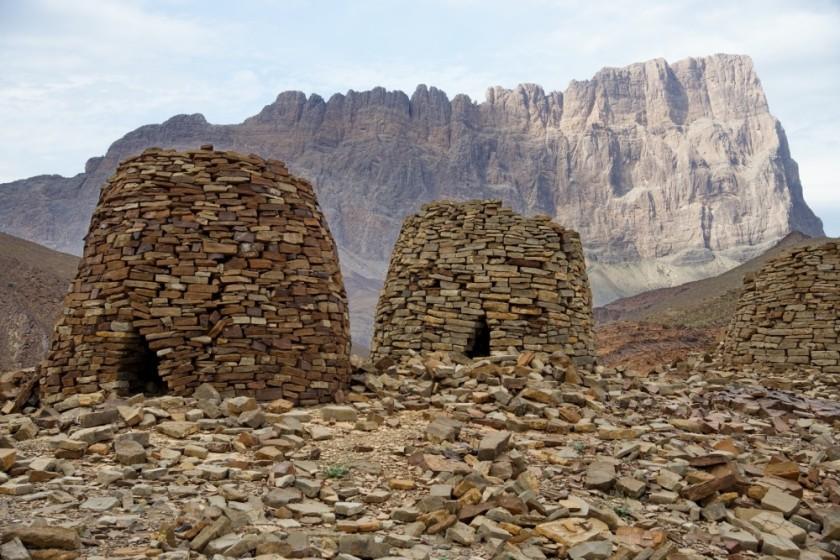
The Atlantis of the Sands
During a subsequent journey to Thumrait, a town located two hours away from Salalah, I had the opportunity to explore the archaeological remnants of the fabled city of Ubar. This city, mentioned in the holy Qur'an and referred to as the lost Atlantis of the Sands by TE Lawrence (of Arabia), was unveiled by a team of archaeologists from Los Angeles. Their discovery was made possible through a combination of literary investigation and satellite imagery. Despite its captivating tale, Ubar remains relatively obscure and underappreciated.
Convincing our driver to take us to the unassuming village of Shisr, where the ruins of this long-lost settlement lie, proved to be quite a task. The city vanished into the sands when the limestone cavern beneath it collapsed, forming a sinkhole. Ubar, situated on the fringes of the Rab al-Khali, also served as a crucial outpost for the frankincense trade and is believed to have been constructed approximately 5000 years ago. Today, only a few structures and a colossal sunken wall stand as remnants of its former glory.
The Hormuz Queen’s Mausoleum
During my initial journey from Sur to Muscat, I glimpsed a solitary mausoleum by the sea, not far from the popular tourist destination of Wadi Shab. This Mausoleum of Bibi Maryam, as I later learned, was a part of the once-prosperous trading city of Qalhat, the dual capital of the kingdom of Ormus (Hormuz). It thrived as a significant hub in the Indian Ocean trading network, boasting strong connections to Arabia, Africa, India, China, and South-East Asia.
Qalhat is the sole city in Oman mentioned by Marco Polo (referred to as Calatu by him). Renowned Moroccan explorer Ibn Batuta described it in the 14th century as having 'fine bazaars and one of the most beautiful mosques'. It is also believed to have been visited by the Chinese voyager Zheng He. The city had a sizable Indian community residing there due to the close trading ties - particularly in dates and horses - with the western coast of India.
Only remnants of Qalhat remain today, such as water cisterns, visible city foundations, and the mausoleum of Bibi Maryam, a prominent ruler of the city. The Portuguese occupation and subsequent abandonment led to the destruction of the rest of the city.
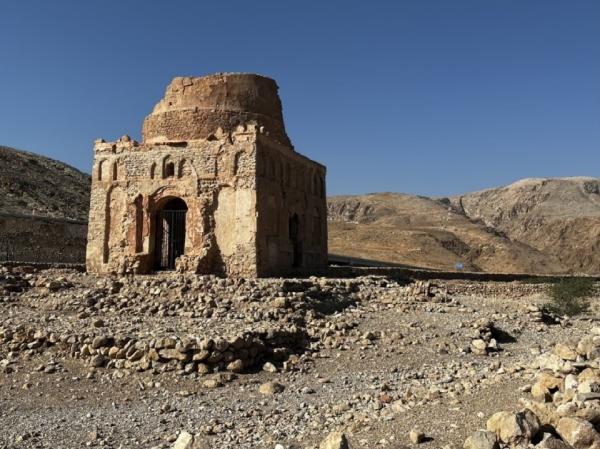
Where the Eagle Dared
In the past, it is believed that King Solomon visited Qalhat during one of his flying journeys and discovered a castle that had been forgotten, with only an eagle residing there. Centuries later, Qalhat became the site of the renowned Battle of Salut, where Malik Ibn Fahm defeated the Persians, marking a significant moment in Oman's history.
Situated just a short 20-minute drive from Bahla, the Salut Castle is an essential historical site in Oman, although it may not be widely recognized or visited. This urban center has a remarkable history, spanning over 3500 years from 3000 BCE to 300 CE, with continuous habitation during the Bronze and Iron ages. Qalhat played a crucial role in global trade, particularly in copper from the al-Hajar mountains, and had extensive connections with Mesopotamia and the Indus Valley civilization in India.
The newly established Visitor Centre at the Salut Archaeological site showcases a diverse collection of artifacts and historical objects. These include pottery adorned with snake motifs, shell makeup kits, necklaces made in India for women, and seals inspired by the art of the Indus Valley culture. Visiting the site is highly recommended, and the best part is that it's free. The Salut Archaeological site has been proposed for inclusion in the UNESCO World Heritage Site list, a well-deserved recognition for its historical significance.
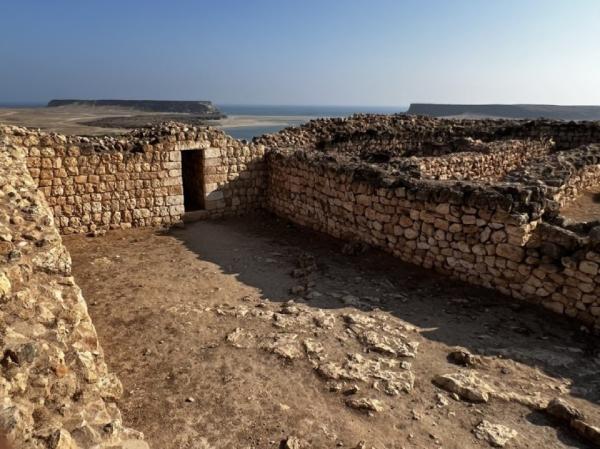
Tombs of Eternity
In the vicinity of the grand Jebel al-Misht, near Ibri town in al-Ayn village, lie 19 beehive stone tombs. Recognized by UNESCO, these tombs, along with the nearby Bat necropolis and the monumental tower at al-Khutm, form a World Heritage site. This protohistoric archaeological complex is hailed as a representation of "one of the most complete and well-preserved ensembles of settlements and necropolises from the 3rd millennium BCE worldwide".
Dating back to a time when Oman played a crucial role in copper mining and trade, these tombs have stood the test of time. Despite lacking intricate artistry, these stone-dressed tombs have endured for over 5000 years, outlasting kingdoms, empires, palaces, and castles. Built with stacked stones and basic mud mortar, credit is due to the Bronze Age architects for selecting a picturesque mountainous location in Oman.
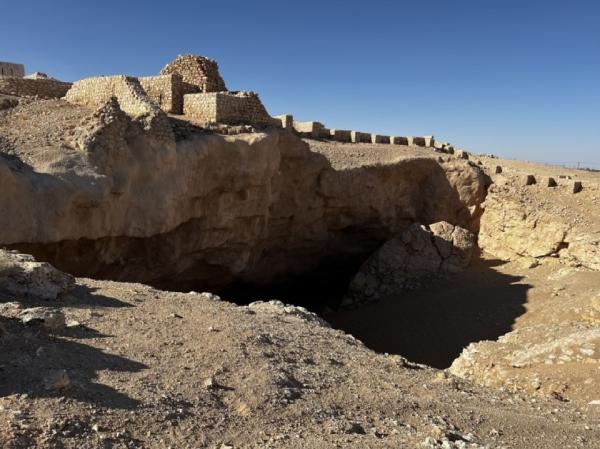
Crossroads of History
History's intricate tapestry is woven with the stories, endeavors, and experiences of humanity set against the backdrop of geography and time. Each location holds its own narrative, with remnants of the past subtly embedded in the surroundings. Originating from India, a land steeped in history, I was drawn to explore Oman's historical landscape. What I uncovered was truly enlightening. The five historical sites in Oman highlighted here pay homage to the country's enduring history and its significant role as a pivotal hub in the eternal journey of global historical exchanges.
Similar to the warm hospitality of Oman, there is a wealth of Omani heritage waiting to be uncovered and appreciated.
Ambassador Amit Narang represents India in the Sultanate of Oman.

